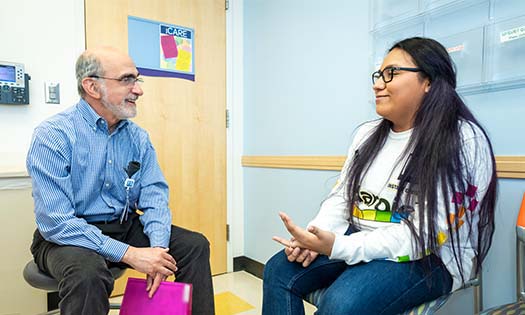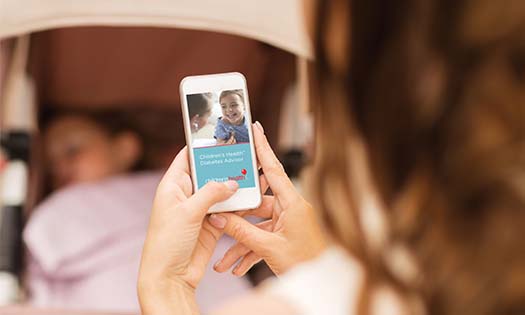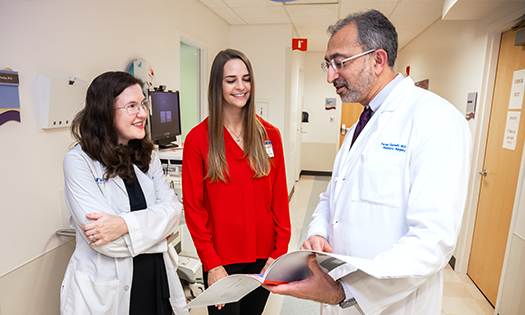In the early months of the COVID-19 pandemic, doctors at Children’s Medical Center Dallas, part of Children’s Health℠, noticed that patients were arriving at the hospital with undiagnosed diabetes in a more advanced state than before the outbreak. The severity of their symptoms from diabetic ketoacidosis (DKA) or hyperglycemic hyperosmolar state (HHS) motivated clinician researchers to investigate which of these patients were most vulnerable to adverse outcomes.
“We saw twice as many kids with DKA with prolonged ICU stays during COVID, and we wondered why,” says Perrin White, M.D., Division Director of Pediatric Endocrinology at Children's Health and Professor at UT Southwestern. “What we found is that we could predict who's most likely to have a problem. There were more children with type 2 diabetes – and the kids arriving at the hospital were sicker.”
To determine who is most at risk, he and Soumya Adhikari, M.D., Associate Division Chief of Pediatric Endocrinology at Children's Health and Professor at UT Southwestern, took a deep dive into electronic medical records at Children’s Health. Their research team examined clinical data from 4,565 admissions for diabetes complications dating back to 2010. The findings were reported in a paper that was published in July 2024.
In this Q&A, Dr. Adhikari and Dr. White answer questions about their research, how to identify children at risk, and how providers can adjust their care approach to potentially improve outcomes.
What prompted your team to explore the increased severity of DKA and HHS in children during the COVID-19 pandemic?
People avoided medical care in the heart of the pandemic, especially before vaccines were available. Elective preventive care was delayed. Patients didn't seek out medical care until they were experiencing serious complications. What we noticed was, on average, the children we were seeing with DKA or HHS were sicker than they had been prior to the pandemic. That's what we saw and wanted to investigate.
What are the key risk factors you identified that contribute to more severe presentations of DKA and HHS in children?
We asked ourselves if could we predict the children who might experience an adverse outcome because of how sick they were presenting?
We identified three factors that determined likelihood of adverse outcomes:
Glucose higher than 600 – severe hyperglycemia
PH less than 7.1 – acidosis
Whether patient has type 2 diabetes
How does your study differ from earlier research on DKA and HHS, and why is that significant?
This is the largest study to use medical records data to look at pediatric outcomes for DKA and HHS. It speaks to our ability to get accurate data out of the medical record in a way that allows us to come to meaningful conclusions and feel really good about the accuracy of those conclusions.
How can endocrinologists and referring providers utilize the findings from your study to improve patient outcomes?
You can look at a kid who does not have any of these three risk factors and say, as long as we follow accepted protocols, this kid is likely to do just fine. At many facilities they may even qualify for treatment on the regular hospital floor. On the other hand, if a patient has type 2 diabetes, their pH is under 7.1 and glucose is over 600mg/dL, they probably should be in the ICU for at least the first 12-plus hours and receive very close attention.
What is your team working on next with regard to these high-risk presentations?
It’s one thing to be able to identify a child at high risk of an adverse outcome, and something very different to be able to say, if we do this or that differently for these high-risk children, we can mitigate that risk. That’s our next challenge – to determine how we can decrease the risk of these adverse outcomes in the children identified to be at risk.
Why Children’s Health: Endocrinological expertise and game-changing research
Children’s Health is committed to raising awareness about diabetes within the community and providing expert care to young patients.
Our team follows 2,500 children with diabetes and knows that the cognitive burden of this condition is high. Children with diabetes must make hundreds of decisions every day to avoid the consequences of hypoglycemia, hyperglycemia, and other complications.
We also involve families in the development of their child's care plan so they understand the full breadth of options available as well as their pros and cons. Our underlying philosophy is to meet kids and families where they are because what works for one patient may not work for another.


